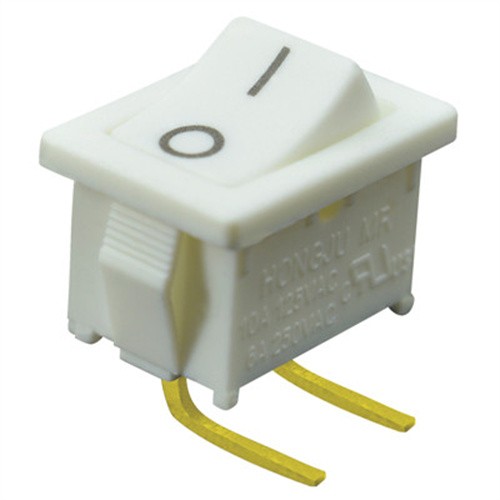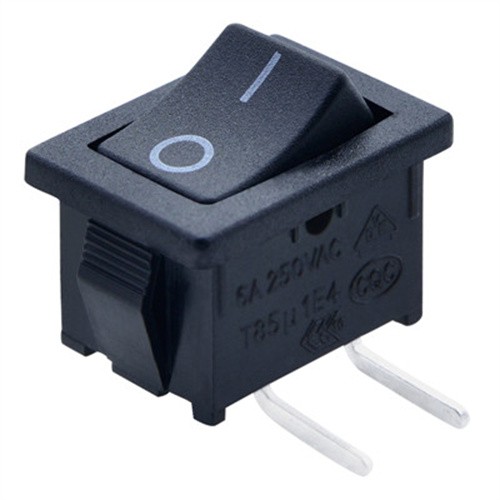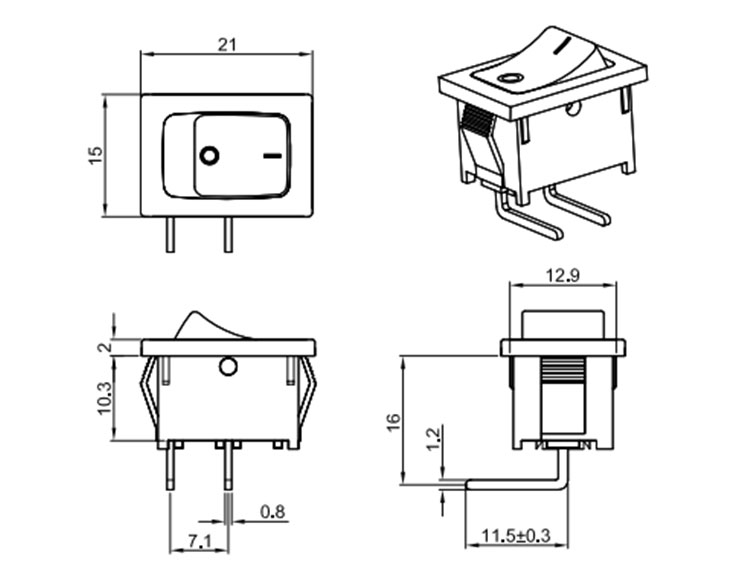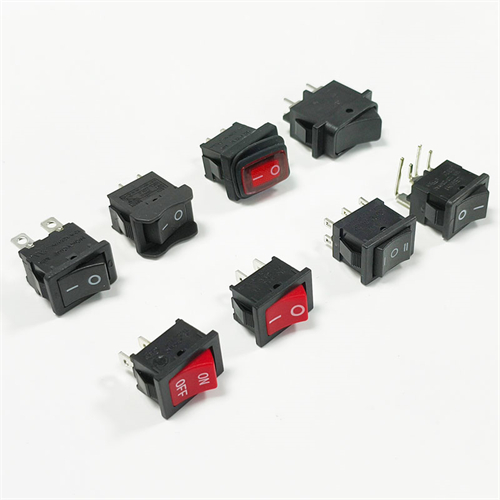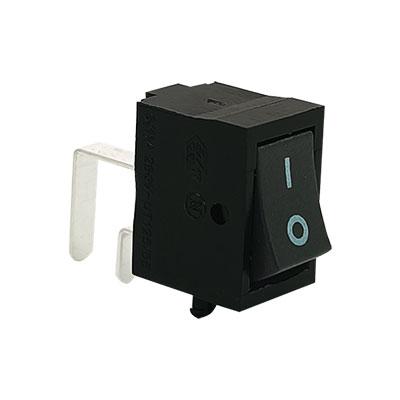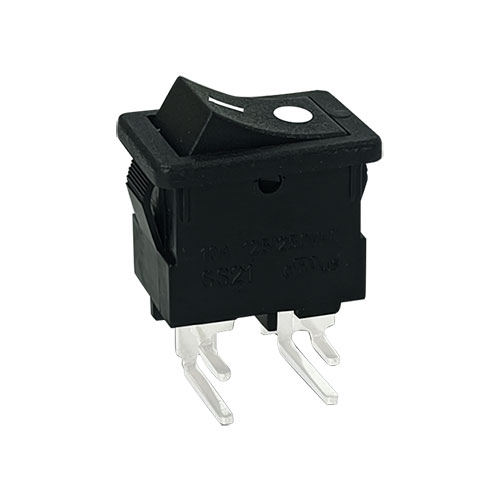Snap In Rocker Switch
There are different types of rocker switches available on the market, and one of the most common types is the 2-pin right angle rocker switch
There are different types of rocker switches available on the market, and one of the most common types is the 2-pin right angle rocker switch. This type of switch is used in a wide range of applications, from household appliances to industrial machines.
A 2-pin right angle rocker switch is a type of electrical switch that has two pins or terminals, and it is usually mounted on a panel or a surface with a right-angle orientation. The switch is activated by a rocker or paddle that rocks back and forth to open or close the electrical circuit. The switch is very easy to use, and it provides a convenient way to turn on or off a device or a system.
One of the main advantages of a 2-pin right angle rocker switch is that it is very versatile and can be used in a variety of applications. For example, it can be used as an on/off switch for lights, fans, and motors. It can also be used to control the speed or direction of a motor by using a DPDT (double-pole, double-throw) configuration.
Another advantage of the 2-pin right angle rocker switch is that it is very reliable and durable. This type of switch is designed to withstand a lot of use and abuse, and it can last for many years without any problems. The switch is also resistant to moisture, dust, and other environmental factors, which makes it ideal for use in harsh environments.
The 2 - pin right angle PCB mount rocker switch is a specialized variant designed to meet the specific spatial and connection requirements of printed circuit board (PCB) designs. Its most distinctive feature lies in the orientation of the two connection pins, which are bent at a 90 - degree angle relative to the switch body. This right - angle configuration enables the switch to be mounted perpendicular to the surface of the PCB, making it an excellent solution for applications where minimizing the vertical space occupied by components is crucial.
In terms of working principle, it shares the fundamental on - off functionality with standard 2 - pin rocker switches. When the rocker is in the “off” position, the internal electrical contacts are separated, interrupting the circuit and preventing current flow. Conversely, toggling the rocker to the “on” position closes the circuit by bringing the contacts together, allowing electricity to pass through to the connected components on the PCB.
The right - angle mounting design offers several key advantages. Firstly, it helps in creating more compact and space - efficient PCB layouts. In densely populated circuit boards, such as those found in small handheld devices, miniaturized control modules, or high - end audio equipment with limited internal space, the 2 - pin right angle PCB mount rocker switch can be neatly integrated without protruding too much, thus optimizing the overall design. Secondly, the perpendicular orientation of the pins simplifies the routing of traces on the PCB, reducing the complexity of the circuit layout and potentially minimizing the risk of electrical interference.
These switches are also known for their secure and reliable connection. Once soldered onto the PCB, the right - angle pins provide a stable mechanical and electrical link, ensuring that the switch remains firmly in place even under conditions of vibration or shock. Additionally, they are available in various styles, with different actuation forces and tactile feedback characteristics, allowing designers to choose the most appropriate option according to the user experience requirements of their products.
INQUIRY
CATEGORIES
LATEST NEWS
CONTACT US
Contact: Bella
Phone: 15999819066
E-mail: rucoe@rucoe.com
Whatsapp:+86-15999819066
Add: Taoyuan Street, Nanshan, Shenzhen
